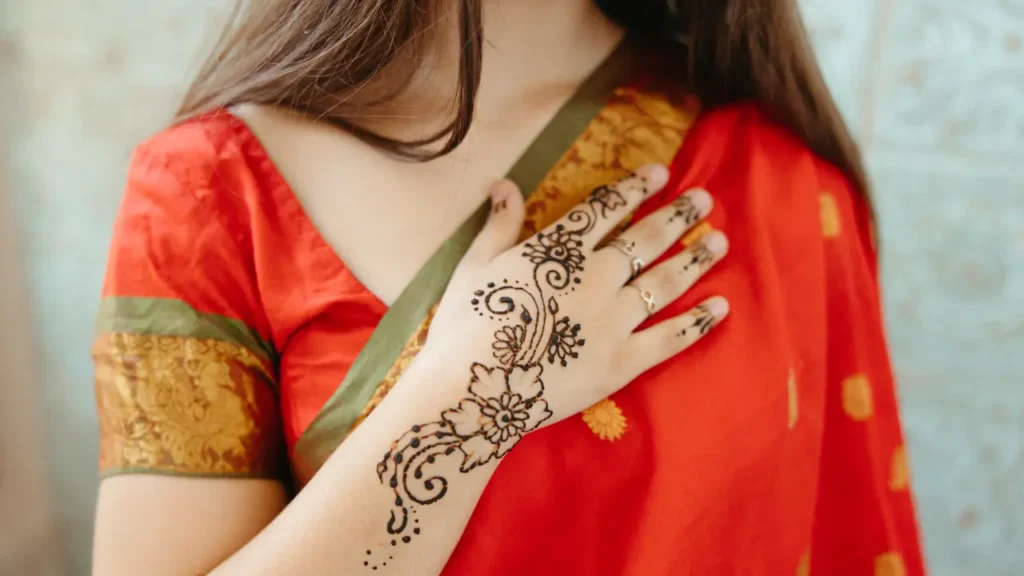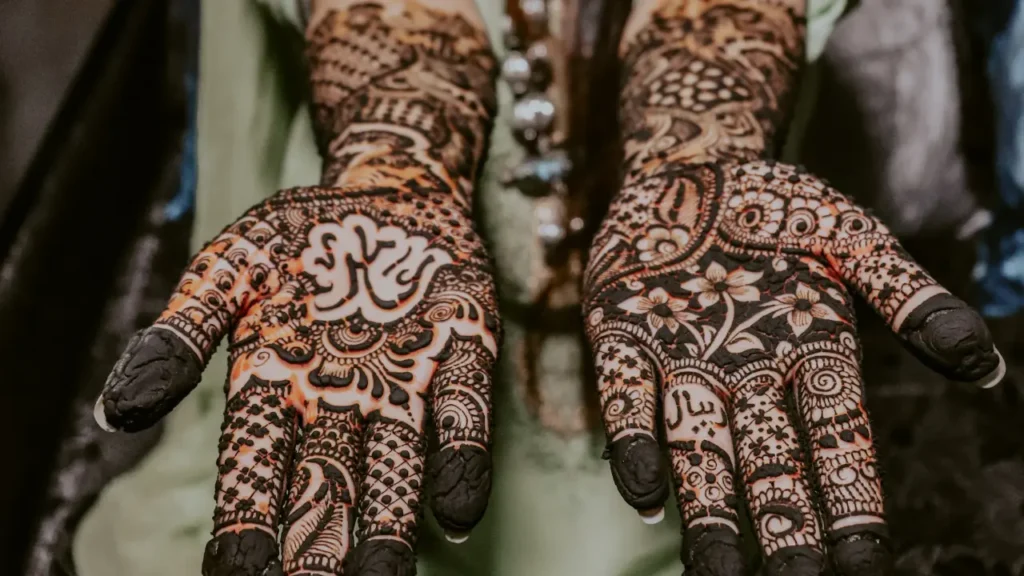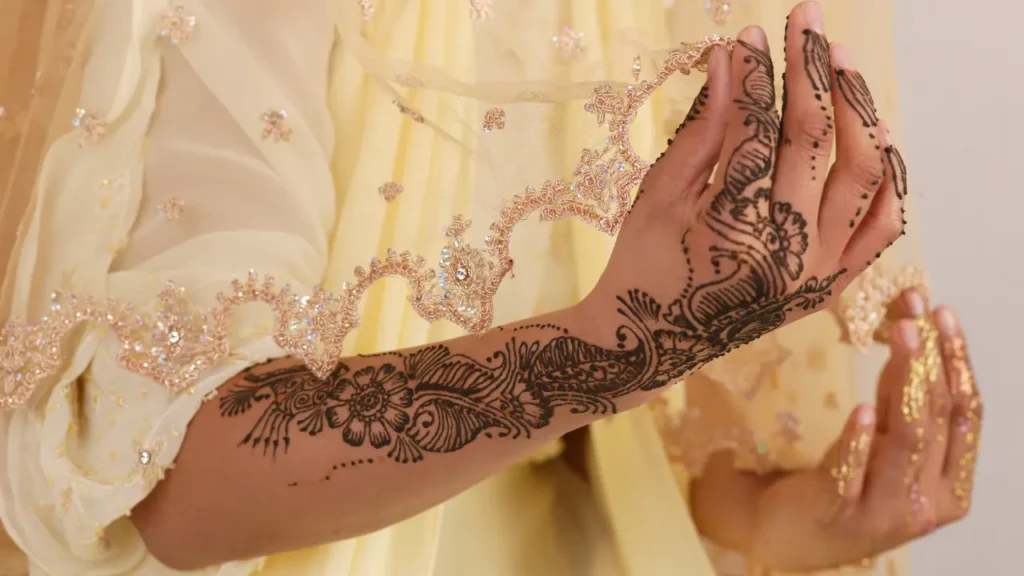Captivating Mehndi Designs to Elevate Your Beauty Rituals!
Mehndi, also known as henna, has been an integral part of beauty rituals and cultural celebrations in various parts of the world for centuries. Its captivating designs have adorned the hands and feet of people, especially women, during weddings, festivals, and other joyous occasions. Mehndi art is not just a temporary body decoration; it holds deep cultural significance and artistic value.
The Origin of Mehndi Art
The origins of Mehndi can be traced back to ancient civilizations, with evidence of its usage found in ancient Egypt and the Indian subcontinent. The application of Mehndi was initially used for its cooling properties and medicinal benefits. Over time, it evolved into an art form, with intricate patterns and designs being created to celebrate special occasions.
Mehndi as an Art Form
Mehndi is not merely an application of color on the skin; it is a form of art that requires precision and skill. The designs range from delicate floral patterns to complex geometric shapes, showcasing the artist’s creativity and expertise.
Intricate Designs and Patterns
Mehndi designs are characterized by their fine details and exquisite patterns. Artists often use fine-tipped cones to create intricate motifs that flow gracefully across the skin. The patterns may include traditional elements like paisleys, lotus flowers, and peacocks, as well as contemporary additions like hearts, stars, and even personal symbols.
Traditional vs. Contemporary Mehndi Designs
While traditional Mehndi designs are deeply rooted in cultural symbols and folklore, contemporary Mehndi embraces modern aesthetics, incorporating elements like abstract patterns and fusion with other art forms. Contemporary Mehndi artists experiment with blending traditional and modern elements to create designs that appeal to a wide range of audiences.
Geographical Variations in Mehndi Styles
Different regions have their distinct Mehndi styles. From the intricate paisleys of Indian Mehndi to the bold and geometric Arabic designs, each style has its unique charm. In the realm of Indian Mehndi, one can marvel at the opulence of elaborate designs cascading across the entirety of the hand and gracefully extending up the forearm. In contrast, Arabic Mehndi is known for its bold and flowing patterns, which usually adorn the hand and not the arm.

Mehndi as a Beauty Ritual
Mehndi holds immense cultural and emotional significance in various ceremonies and celebrations.
Bridal Mehndi: Symbolism and Significance
In many cultures, bridal Mehndi symbolizes love, prosperity, and the bond between the couple. Intricate bridal designs often incorporate the groom’s initials or hidden names, adding an element of surprise. The bridal Mehndi ceremony is a special occasion where the bride’s hands and feet are adorned with elaborate designs, and it is often a festive and joyous event.
Mehndi for Festivals and Celebrations
Festivals like Eid, Diwali, and Navratri are incomplete without the application of Mehndi. It is considered auspicious and brings joy to the festivities. During these occasions, both women and children adorn their hands with Mehndi, creating a sense of unity and celebration among the community.
Everyday Mehndi: A Fashion Statement
In recent times, Mehndi has become a fashion statement, with people applying it casually to express their individuality and sense of style. Everyday Mehndi is more minimalist and subtle compared to ceremonial designs, making it suitable for various casual events and social gatherings.
Mehndi Ingredients and Application Techniques
Traditional Mehndi is made from natural ingredients, and its application requires skill and finesse.
Natural Mehndi Ingredients
Mehndi paste is derived from the leaves of the henna plant, mixed with essential oils and other natural substances for a rich, dark stain. Some artists also incorporate additional natural ingredients like tea, coffee, or lemon juice to enhance the color intensity of the stain.
Applying Mehndi: Tips and Tricks
The application process requires patience and precision. Experienced artists have mastered various techniques to ensure flawless designs. They carefully apply the Mehndi paste on the skin using a cone or a brush, creating intricate patterns with steady hands. After applying the paste, the design is left to dry for several hours before it is gently scraped off, leaving behind a beautiful orange stain that gradually darkens over the next 24-48 hours.

Aftercare for a Long-Lasting Stain
To enhance the longevity of the Mehndi stain, aftercare tips like avoiding water contact, using natural oils or balms to moisturize the skin, and avoiding harsh chemicals are followed. The longer the Mehndi stays on the skin without being exposed to water, the deeper and more vibrant the stain becomes.
The Evolution of Mehndi Designs
Mehndi art has evolved over time, incorporating diverse influences and catering to changing preferences.
Fusion with Other Art Forms
Contemporary artists often fuse Mehndi with other art forms, such as calligraphy and mandala, creating visually stunning designs. These fusion designs showcase the artists’ versatility and creativity, making them popular choices for those seeking unique and eye-catching Mehndi art.
Influence of Pop Culture and Media
Mehndi designs have been popularized through movies, television, and social media, inspiring new trends and creativity. Celebrities sporting Mehndi at red carpet events and in music videos have contributed to the art form’s global appeal and its incorporation into mainstream fashion.
Contemporary Trends and Innovations
From glitter Mehndi to white henna, artists continually experiment with innovative designs, appealing to modern sensibilities. Glitter Mehndi adds a touch of sparkle to traditional designs, making them perfect for evening events and parties. White henna, while not made from natural henna paste, allows for creative and intricate designs on darker skin tones, offering an alternative to traditional reddish-brown stains.
Captivating Mehndi Designs for Different Occasions
Mehndi designs vary based on the occasion, with each design captivating in its own way.
Minimalist Mehndi for Casual Events
Simple, elegant designs are favored for casual events, giving a touch of beauty without being too extravagant. These designs are perfect for everyday wear and complement various outfits effortlessly.
Elaborate Designs for Weddings
Wedding Mehndi is often elaborate, covering the hands and arms of the bride with intricate patterns that narrate stories of love and joy. These designs may incorporate elements specific to the couple’s love story, family traditions, or cultural symbolism, making them a significant part of the wedding celebration.
Trendy Mehndi for Modern Fashion
For those who love to stay updated with the latest trends, modern Mehndi designs offer a blend of tradition and contemporary style. These designs may include geometric patterns, abstract shapes, or even portray popular symbols or quotes, making them perfect for fashion-forward individuals.
Mehndi as a Global Trend
Mehndi art has transcended cultural boundaries and become a global phenomenon.
Mehndi in Western Culture
The beauty and allure of Mehndi have captured the interest of people in Western countries, with many incorporating it into their celebrations. Mehndi is often sought after for bohemian-themed weddings, music festivals, and various events, where it adds a touch of exotic beauty and cultural richness.
Celebrities and Mehndi
Celebrities embracing Mehndi have further popularized the art form and encouraged its adoption worldwide. Famous personalities from different industries, including Hollywood and the fashion world, have been seen sporting Mehndi designs on various occasions, inspiring fans and followers to try it themselves.
Social Media and Mehndi Artistry
Social media platforms have become a canvas for Mehndi artists to showcase their skills and gain recognition. Talented artists share their latest designs and tutorials on platforms like Instagram and YouTube, building a vast online community of Mehndi enthusiasts who admire and learn from their work.

The Cultural Significance of Mehndi
Mehndi plays a significant role in various cultural ceremonies and celebrations.
Mehndi in Traditional Ceremonies
Mehndi holds spiritual and cultural importance in traditional ceremonies, symbolizing blessings and good fortune. In some cultures, Mehndi is believed to bring luck, prosperity, and protection from evil.
Mehndi in Different Cultures
The designs and customs of Mehndi vary across cultures, reflecting the diversity of traditions and beliefs. In Indian weddings, Mehndi ceremonies are elaborate events with music, dance, and joyful celebrations, whereas in the Middle East, Mehndi is often applied during religious festivals and significant life events.
Mehndi embraces all body types, promoting body positivity and inclusivity in its artistic expressions. The art form celebrates the beauty of all individuals, regardless of age, gender, or body shape, creating a sense of empowerment and acceptance.
Mehndi and Self-Expression
Mehndi design has become a form of self-expression for many individuals.
Empowerment Through Mehndi Art
Mehndi empowers individuals to express their unique identity and personal stories through creative designs. Some individuals opt for designs that symbolize their values, beliefs, or life experiences, making their Mehndi art deeply meaningful.
Personal Stories and Mehndi Design
Many people choose designs that hold personal significance, such as symbols representing their journey and aspirations. Some might incorporate elements that reflect their cultural heritage, commemorate special memories, or honor loved ones, making their Mehndi design a visual narrative of their lives.
DIY Mehndi: Trying it at Home
Mehndi enthusiasts often try their hand at creating mehndi designs at home.
Safety Precautions and Allergies
DIY artists must be aware of safety measures and potential allergic reactions to henna. Before applying Mehndi, individuals should ensure that they are not allergic to any of the ingredients and perform a patch test on a small area of the skin.
Mehndi Kits and Tools
Mehndi kits with ready-to-use cones and design stencils facilitate DIY Mehndi application. These kits often contain all the necessary tools and ingredients, making it convenient for beginners to experiment with Mehndi artistry.
Exploring Your Creativity
Creating DIY Mehndi designs allows individuals to explore their creativity and experiment with various patterns. Many artists start with simple designs and gradually progress to more intricate ones, honing their skills and developing their unique style.
Mehndi Artists: Their Journey and Vision
Talented Mehndi artists have made significant contributions to this art form.
Renowned Mehndi Artists
The journey of some renowned Mehndi artists, their unique styles, and artistic visions. These artists have spent years perfecting their craft, and their designs are sought after by clients from around the world.
Preserving Cultural Heritage
Mehndi artists play a crucial role in preserving cultural heritage and passing down traditional designs. They often participate in cultural events, workshops, and exhibitions to showcase the beauty and significance of Mehndi art to the younger generation.
Mehndi as a Business
Mehndi artists often turn their passion into a successful business, offering their services at various events and gatherings. They create custom designs to suit individual preferences, ensuring that each client receives a personalized and memorable Mehndi experience.
The Future of Mehndi Design
Mehndi design continues to evolve, embracing modernity while staying true to its roots.
Innovative Technologies in Mehndi
Advancements in technology may introduce new ways of applying Mehndi, while preserving its essence. For instance, 3D Mehndi printing might revolutionize the way intricate designs are created, providing even more options for creative expression.
Redefining Beauty Standards
Mehndi design challenges conventional beauty standards and promotes appreciation for diverse art forms. It celebrates the natural beauty of the human body and encourages people to embrace their individuality, regardless of societal norms.
Environmental Concerns and Mehndi
With the increasing demand for natural henna, sustainable practices in henna cultivation become essential. Environmentally conscious artists and henna enthusiasts advocate for ethically sourced henna, ensuring that its production is both eco-friendly and socially responsible.
Conclusion
Mehndi design is not merely a decorative art form; it is a cultural heritage, a symbol of celebration, and a canvas for self-expression. Its captivating designs continue to transcend borders and capture the hearts of people worldwide. As Mehndi evolves with the changing times, its essence as an art form deeply rooted in cultural traditions remains intact, making it a timeless and cherished practice for generations to come.

Leave a Reply